Being a houseplant parent can be challenging! Knowing when to fertilize your indoor plant is a bit tricky. Knowing when to feed houseplants is difficult, even if you are an experienced grower.
A houseplant does not cry when it is hungry or uncomfortable, as human babies do. Instead, they react to their environment in much more subtle ways.
To solve this challenge in your plant parent journey, I will cover the basics of houseplant fertilizer. Besides, tell you how and when to feed your indoor plants.
Why Do Indoor Plants Need Fertilizer?

For healthy growth, houseplants need fertilizer. After feeding, indoor plants get the minerals they need. Also, fertilizing indoor plants is important since they lack organic matter. Moreover, if you fertilize your indoor plants at regular intervals, they will remain healthy.
From a scientific perspective, fertilizer is different from plant food. A plant’s root system generates its food. They do this by absorbing water and carbon dioxide. Yet, plants also need nitrogen, phosphorus, and potassium in the soil. They receive these nutrients from fertilizers.
During photosynthesis, plants get their food by using light energy. They absorb soil moisture and carbon dioxide from the air. Together, they produce sugars that plants use as food. Thus, plants feed themselves by making their own food.
However, for plants to thrive, they need more than food. Fertilized plants receive macronutrients such as nitrogen, phosphorus, and potassium that potting soil lacks. Even though plant food isn’t a fertilizer, people tend to use them as a food option.
When Should You Fertilize Houseplants?
The best time to fertilize your houseplants is during their peak growth, like in spring or summer. Also, when to fertilize depends on the type of plant you have. Several houseplants need weekly fertilization because they are heavy feeders.
In contrast, slow-growing houseplants only need feeding every month or so.
How to use fertilizer for indoor plants?
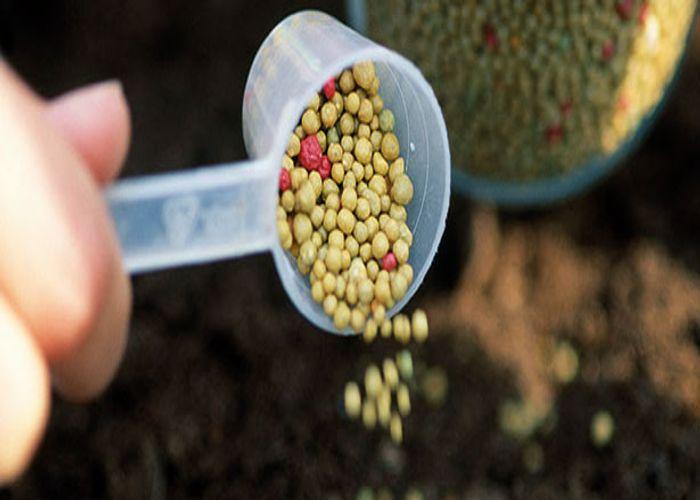
There are several types of houseplant fertilizers that contain macronutrients and micronutrients. On the front of every container of fertilizer a ratio of nitrogen, phosphorous, and potassium is printed. That N-P-K ratio tells you how much of each of those nutrients are present inside a container.
Also, understand that tomato fertilizer or a lawn fertilizer may contain different ratios of macronutrients than an indoor plant fertilizer since the nutritional needs of these plants differ. For this reason, you should use a fertilizer that is designed specifically for houseplants. Hence, ensure that the packaging states “for houseplants.”
The middle number on the container is phosphorus, which is essential for flowering. The flowering plant fertilizer should contain more phosphorus (3-2-1, for example). Those that are used on green houseplants that don’t produce flowers should have a higher nitrogen content. They may also contain balanced ratios of nutrients (5-3-3 or 5-5-5, for example).
For all types of houseplants, typically use a separate houseplant fertilizer. If you are growing flowering houseplants, that is, African violets, begonias, or gloxinias, it won’t be necessary to use separate fertilizers.
In addition to primary macronutrients, fertilizers also contain secondary macronutrients, such as calcium and magnesium, and micronutrients, including iron, zinc, and boron.
Plants do not use these nutrients in the same quantities as the primary macronutrients of N, P, and K, but they are still essential for the metabolic process of every plant. Therefore, you should make sure your indoor plant fertilizer contains some of these nutrients.
What is the Best Type of Fertilizer for Indoor Plants?
There are several factors to take into consideration when choosing a houseplant fertilizer. It’s not enough to get the soil and plants’ mineral balance right. You also need to decide on the type of fertilization.
Also, each method of fertilization has its advantages and disadvantages.
So, what type of fertilizer works best for your houseplants? To help you choose between each type of indoor plant fertilizer, here are fertilizers that you can consider:
Liquid fertilizer for indoor plants

The benefit of using liquid fertilizer is that it is simple to apply and control plant food. All you need to do is dilute to the appropriate strength and fertilize your plants as necessary.
In addition, liquid fertilizers allow you to hold off on fertilizing during the dormant winter months.
Slow-release fertilizers

Nutrients are slowly released into the soil by spikes, pods, and capsules. This is advantageous because you do not have to remember to feed plants. Nevertheless, potting mix nutrients are difficult to control. For small pots, slow-release plant fertilizers are preferred.
Granular fertilizers

It is best to use this fertilizer when repotting a plant in fresh soil. As soon as you water the plant, the granules are absorbed into the soil and release nutrients. Like slow-release fertilizers, it’s hard to control the strength of fertilization.
Organic houseplant fertilizers
There are three kinds of organic fertilizers: liquid, granular, and slow-release. In addition to being environmentally friendly, organic liquid plant food improves soil structure.
Moreover, using organic fertilizers for houseplants reduces the risk of root burn and the accumulation of excess minerals in the soil.
Seaweed fertilizer for indoor plants
One of the best fertilizers you can use on your plants is liquid seaweed. However, this fertilizer is probably the last thing people think of buying when they visit a garden center or shop online. In addition to being organic, liquid seaweed fertilizer is also sourced sustainably. They can also be harvested without harming the environment.
Kelp, a type of seaweed that grows up to 50 meters in length, is the most common type of seaweed used as a fertilizer. Several trace elements are present in organic seaweed fertilizers. These include magnesium, potassium, zinc, iron, and nitrogen. For example, nitrogen is necessary for the production of nitrate, a component of photosynthesis that plants need.
Homemade fertilizer for indoor plants
To make your fertilizer, you must understand each of these nutrients, where to get them, and what they can help with.
Some easy ways to provide your houseplants with the essential nutrients are listed below:
1. Crushed Eggshells
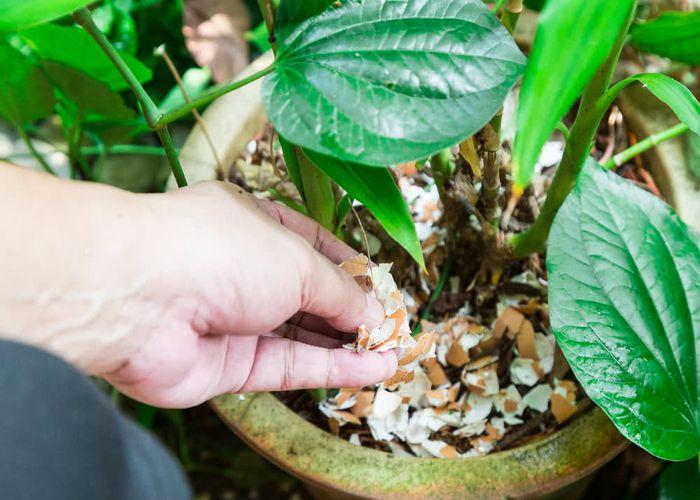
Calcium is an essential nutrient for your plant’s ability to manufacture new cells, as well as its overall growth.
Interestingly, eggshells are rich in calcium. Also, they contain traces of elements like nitrogen, zinc, and phosphoric acid. As an indoor plant food, eggshells can be used as fertilizer. Before using or storing your shells, make sure to rinse them thoroughly to reduce the possibility of mold growth.
Save eggshells until you have about a whole carton worth of fertilizer in the freezer and then you can use them as houseplant fertilizer.
Once you have enough shells, you can crush them with a rolling pin inside their freezer bags, or use a coffee grinder to make shell powder.
While potting your plant, you can mix some eggshells directly into the soil. Also, you can incorporate them into the soil surface of an existing plant. Remember to avoid working the soil too deeply with an existing plant, to prevent root damage.
2. Banana Peels

Bananas can be a tasty snack for healthy humans as well as an ideal nutrient booster for houseplants. Adding bananas to the soil will help provide a healthy dose of potassium. This is particularly useful when growing roses.
To amend the soil, you can use bananas in a few different ways. In the first method, banana peels are turned into a tea. Old banana peels can be stored in a jar of water. After a few days, it will infuse the water with nutrients from the peels. Once the water has been infused, it can be used to water plants.
A similar way to use banana peels is to puree them with water and use them immediately.
Alternatively, you can cut banana peels into pieces and incorporate them into the soil surface, although this is more often done outside.
3. Used Coffee Grounds In Houseplants
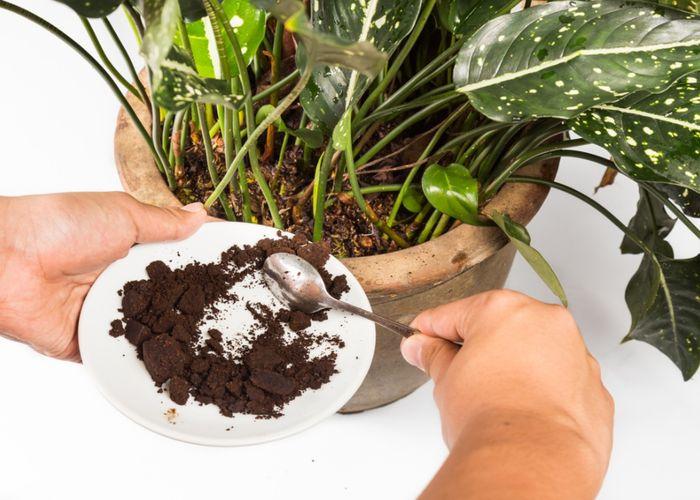
Nitrogen from used coffee grounds helps your indoor plants to grow strong foliage. It is particularly useful for plants, such as begonias, African violets, and roses that are acidic.
The first way to use coffee grounds for fertilizer is as a top dressing. Before spreading coffee grounds on top of the soil, let it dry thoroughly. This prevents it from getting moldy.
Similar to banana peels, you can soak coffee grounds in a jar of water for about a week to make a liquid coffee ground fertilizer.
4. Green Tea

For acid-loving plants like those mentioned above, green tea bags or used green tea leaves are other great options.
There is a chemical compound in green tea leaves called tannic acid that lowers the pH of the soil. Also, they contain high concentrations of nutrients that help improve soil oxygenaration, allowing the roots to thrive.
For healthy growth, brew one green tea bag per two gallons of water every 4 weeks and feed it to your plants. Before giving it to the plants, let the water cool first. In addition to composting, used tea leaves can be worked into the soil directly.
5. Molasses
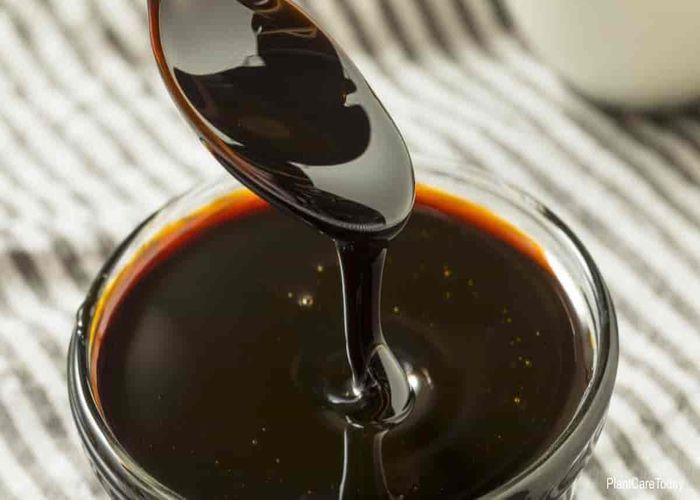
Molasses is a proven expert when it comes to feeding plants with homemade fertilizer. It is a substance accepted by the organic fertilizer industry as a natural fertilizer.
It is common knowledge that organic fertilizers aren’t inexpensive, but molasses is. Therefore, why not make your own?
Molasses supply plants with a rich source of carbon, potassium, calcium, manganese, potassium, copper, magnesium, iron, and other important minerals. Moreover, molasses is a source of food for soil microorganisms.
They are primarily found in nutrient-rich compost teas. They promote rapid growth and a diverse ecosystem to feed your soil.
Additionally, molasses can be mixed with natural fertilizers such as alfalfa meal and Epsom salts to create a soil amendment. To use this mixture, mix one cup of Epsom salt and one and a half cup of alfalfa meal into 4 gallons of water with 1 tablespoon of molasses. After that, water your plants with this solution.
6. Epsom Salts

As a specific fertilizer, Epsom salts are used for plants that are lacking magnesium or sulfur. However, Epsom salts should not be used excessively. They may not be necessary if you are adding other composts or natural fertilizers. In addition, you are unlikely to be deficient in magnesium or sulfur in those situations.
Magnesium is one of the key elements of chlorophyll. In other words, magnesium produces the bright green color of a plant that is healthy and vibrant. In the absence of this, the green color of the leaves will fade and the veins between the leaves may become yellow. This will appear first on the oldest leaves at the bottom of the plant.
If your plants have chlorophyll deficiency, use Epsom salts to replenish them and restore their healthy green color. Certain plants such as herbs, roses, peppers, or tomatoes may be more susceptible to magnesium deficiency.
7. Wood Ash

You can easily raise the pH of soil by adding burned wood ashes to it, which increases the alkalinity. Wood ashes contain a high content of potassium, calcium, and phosphorus.
In the same way that Epsom salts are not a one-size-fits-all solution, hardwood ash is not either. Only use in circumstances where it is required, otherwise, it can be harmful to plants if the alkalinity is already too high.
To determine if wood ash would be a good addition to your potting soil, you need to conduct a soil pH test. If the ash level is above 6.5, it can be harmful to plants.
If you want to raise the alkalinity of your soil, you can just sprinkle the ash on top and gently work it in.
Be careful not to disturb the roots by going too deep. Also, water the plants right away after planting.
8. Gelatin Powder

A healthy plant requires nitrogen to thrive. With gelatin powder, you can give your plant a little nitrogen boost, which will help its foliage grow strong and healthy.
For plants such as elephant ears and Monstera plants, which have large attractive leaves, this is especially beneficial.
To use gelatin, dissolve one packet of 7g of gelatin in one quart of water. In most cases, this is done by first putting 1 cup of hot water into the powder, followed by three cups of cold water. Directly apply this solution to the soil each month.
9. Used Cooking Water

During the boiling process, many of the essential micronutrients are released into the water. This includes nutrients like calcium, nitrogen, and phosphorous.
You can use the cooking water to water your plants and reap a variety of benefits. Besides being a free source of nutrients that would otherwise just be flushed down the drain, it will also enhance nutrient storage in the soil as well as the soil’s ability to retain water.
It is especially useful for plants like ferns and umbrella plants that prefer moist conditions.
10. Corn Gluten Meal
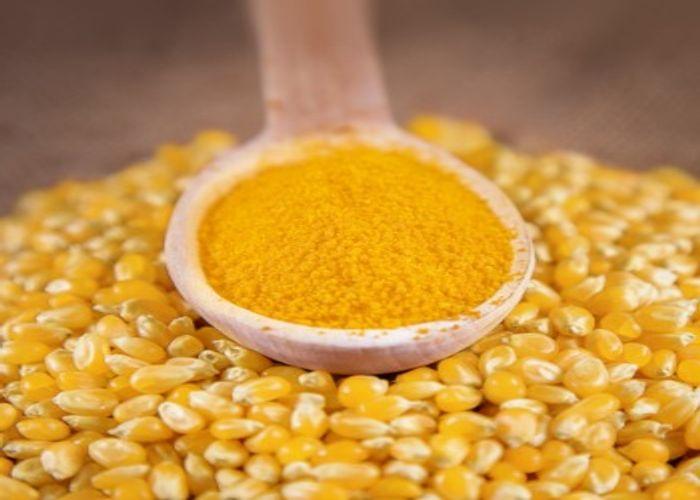
When corn is processed through wet milling, corn gluten meal is created as a byproduct. This organic herbicide contains 10% nitrogen and is used commonly as a pre-emergent herbicide.
Basically, corn gluten meal hinders seed germination, but doesn’t affect plants that are already established. In fact, plants with lots of leaves will benefit from a gentle nitrogen boost.
Add a thin layer of corn gluten meal to the soil surface as a top-dressing and scratch it in gently.
As always, avoid disturbing the roots. After the seedlings are strong and healthy, you can start this about two weeks after germination. Remember to use corn gluten meal in moderation.
Conclusion
As you can see, fertilizing houseplants isn’t too difficult. With the right products and regular application, you will keep your houseplant family happy and healthy.
There are several methods for making homemade fertilizer. Pick the method that is best suited for your plant.
To get help with fertilizing your indoor plants, please feel free to contact us on AbanaHomes. Our team will be happy to assist you.
Related Articles
- 15 Best Plants for Front Door Entrance India | Auspicious plants for front door
- 10+ Money plant Benefits That Will Make you Keep It In Your House
- Are Spider Plants Toxic to Cats?- 4 Ways To Prevent Your Cats From Eating Spider Plants.
- Best Plants for the House – 8 Top Apartment Plants That You Can’t Miss
- How to Braid Your Snake Plant: Tips and Care Guide
- 20+ Rare and Unusual Peace Lily Varieties You’ll Love





